|
Page < 1 2 3 4 5 6 7 8 9 10 11 12 13 14 15 16 17 18 19 20 21 22 23 24 25 >
Show
in alphabetical order
101. Satguru Sivaya
Subramuniyaswami (1927-2001) American born, was one of
Hinduism's foremost spiritual teachers, a prolific author and publisher of Hinduism
Today magazine.
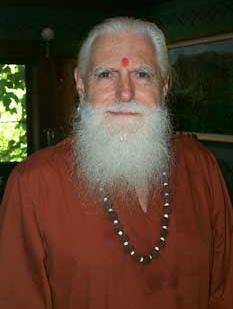 He
has called Hinduism, the
Greatest Religion in the World. He
has called Hinduism, the
Greatest Religion in the World.
"Hinduism is so broad. Within it there is a place
for the insane and a place for the saint...There is a place for the intelligent
person and plenty of room for the fool. The beauty of Hinduism is that it does
not demand of every soul perfection in this life, a necessary conclusion for
those who believe in a single lifetime during which human perfection or grace
must be achieved. Belief in reincarnation gives the Hindu an acceptance of every
level of humanity. Some souls are simply older souls than others, but all are
inherently the same, inherently immortal and of the nature of the Divine."
"Hinduism, the Eternal Way
or Sanatana Dharma, has no beginning, therefore will certainly have no end. It
was never created, and therefore it cannot be destroyed. It is a God-centric
religion. The center of it is God. All of the other religions are
prophet-centric. It is the only religion that has such breadth and depth.
Hinduism contains the deities and the sanctified temples, the esoteric knowledge
of inner states of consciousness, yoga and the disciplines of meditation. It
possesses a gentle compassion and a genuine tolerance and appreciation for other
religions. It remains
undogmatic and open to inquiry. It believes in a just world in which every soul
is guided by karma to the ultimate goal of Self Realization, or moksha, freedom
from rebirth. It rest content in the knowledge of the divine origin of the soul.
It cherishes the largest storehouse of scripture and philosophy on the Earth,
and the oldest. It is endowed with a tradition of saints and sages, of realized
men and women, unrivaled on the Earth.
It is the sum of these, and
more, which makes me boldly declare that Hinduism is the greatest religion in
the world.
(source: Hinduism
Today - March/April 2000 p.
10 -11).
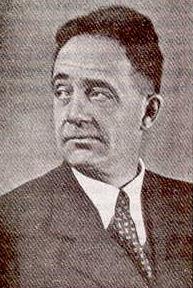 102. Dr. Heinrich
Zimmer (1890-1943), the great German
Indologist,
a man of penetrating intellect, the keenest esthetic sensibility.
Zimmer came to the United States in 1940, at the height of his career, and
was lecturing at Columbia University when he died in 1943. His other works in
the Bollingen series include Myths and Symbols in Indian Art and Civilization
and Philosophies of India. 102. Dr. Heinrich
Zimmer (1890-1943), the great German
Indologist,
a man of penetrating intellect, the keenest esthetic sensibility.
Zimmer came to the United States in 1940, at the height of his career, and
was lecturing at Columbia University when he died in 1943. His other works in
the Bollingen series include Myths and Symbols in Indian Art and Civilization
and Philosophies of India.
"We of the Occident are about to arrive at a
crossroads that was reached by the thinkers of India some seven hundred years
before Christ. This is the real reason, why we become both vexed and stimulated,
uneasy and yet interested, when confronted with the concepts and images of
Oriental wisdom."
(source: Readings in Eastern Religious
Thought - Hinduism - Edited by Allie M.
Frazier vol 1. p 17).
"It is well known that our Christian Western
tradition has long refused to accept the wisdom of the pagans on an equal
footing with the body of revelation that it cherishes and worships as its
own." The fact that there are virtue, wisdom, and inspiration to be
found even among the historical enemies of Christianity."
(source: Myths and
Symbols in Indian Art and Civilization
- by Heinrich
Zimmer and Joseph Campbell p. 217-218).
"The whole edifice of Indian
civilization is imbued with spiritual meaning. The close interdependence and
perfect harmonization of the two serve to counteract the natural tendency of
Indian philosophy to become recondite and esoteric, removed from life and the
task of the education of society. In the Hindu world, the folklore and popular
mythology carry the truths and teachings of the philosophers to the masses. In
this symbolic form the ideas do not have to be watered down to be popularized.
The vivid, perfectly appropriate pictorial script preserves the doctrines
without the slightest damage to their sense."
(source: Philosophies
of India - By
Heinrich
Zimmer p. 26).
 Regarding the Cosmic
Dance of Shiva, he has said: Regarding the Cosmic
Dance of Shiva, he has said:
"His gesture wild and full
of grace, precipitate the cosmic illusion; his flying arms, and legs and the
swaying of his torso produce – indeed, they are – the continuous
creation-destruction of the universe, death exactly balancing birth,
annihilation the end of every coming-forth."
(source: The
Tao of Physics: An Exploration of the Parallels Between Modern Physics and
Eastern Mysticism - By Fritjof Capra
p.243).
“In one of the Puranic
accounts of the deeds of Vishnu in his Boar Incarnation
or Avatar, occurs a casual reference to the cyclic recurrence of the
great moments of myth. The Boar, carrying on his arm the Goddess
Earth whom he is in the act of rescuing from the depths of the sea,
passingly remarks to her:
“Every time I carry you this
way….”
For the Western mind, which believes
in single, epoch-making, historical events (such as, for instance, the coming of
Christ) this casual comment of the ageless god has a gently minimizing,
annihilating effect.
It is easy for us to forget that our strictly linear,
evolutionary idea of time is something peculiar to modern man. Even the Greeks
of the day of Plato and Aristotle , who were much nearer than the Hindus to our
ways of thought and feeling did not share it. Indeed, St. Augustine seems to
have been the first to conceive of this modern idea of time."
(source: Myths and
Symbols in Indian Art and Civilization
- by Heinrich
Zimmer and Joseph Campbell
p.18 and 152 -155).
103.
Irwin
Babbitt (1865-1933) the Harvard literary scholar and
cultural thinker, will always stand as a monument to American intellectual culture at its
finest. Babbitt had
a fascination with Asian religion and philosophy. He was one of the principal
critics of the twentieth century and an influential teacher of T. S. Eliot.
"East bowed low before the blast in humble
deep disdain,
It let the legions thunder past, and plunged in thought again."
104. Dr.
Ananda Kentish
Cooraswamy (1877-1947) the late curator of Indian art at the Boston
Museum of Fine Arts, was unexcelled in his knowledge of the art of the Orient,
and unmatched in his understanding of Indian culture, language, religion and
philosophy.
He wanted India to
remain Indian and continue to demonstrate that a pattern of life rooted in
religion and philosophy can also be elegant, graceful and fully satisfying. In
India philosophy has been the key in the understanding of concrete life, not a
mere intellectual exercise in abstract thought.
He is the author of ' The
Dance of Shiva: Essays on Indian Art and Culture'
 Praising this grand
achievement of art, he writes about the image of the
Nataraja: Praising this grand
achievement of art, he writes about the image of the
Nataraja:
"This conception
itself is a synthesis of science, religion and art. In the night of Brahma,
Nature is inert, and cannot dance till Shiva wills it. He rises from His
rapture, and dancing sends through inert matter pushing waves of awakening
sound, and lo! matter also dances appearing as a glory round about Him. This is
poetry; but nonetheless, science.
Whatever the origins of Siva's dance, it became in time the clearest image of the activity of God which any art or religion can boast of.
“How amazing the range of thought and sympathy of those
rishi-artists who conceived such a type as this, affording an image of reality,
a key to the complex tissue of life, a theory of nature, note merely
satisfactory to a single clique or race, not acceptable to the thinkers of a
country only, but Universal in its appeal to the philosopher, the lover and the
artist of all ages and all countries…”
“Every part of such an image as this is directly expressive
not of any superstition or dogma, but of evident facts. No
artist of today, however great, could more exactly or more wisely create an
image of that Energy which science must postulate behind all phenomena.
“It is not strange that the figure of Nataraja has commanded the adoration of
so many generations past; familiar with all skepticisms, expert in tracing all
beliefs to primitive superstitions, explorers of the infinitely great and
infinitely small, we are worshippers of Nataraja still.”
(source: The
Dance of Shiva - By Dr. Ananda K Coomaraswamy p. 57- 66 and
India
and World Civilization - By D. P. Singhal
Pan Macmillan Limited. 1993 .Part II p. 266).
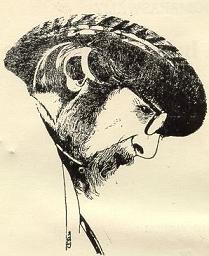 "
Hindus have grasped more firmly than others the fundamental meaning and purpose
of life, and more deliberately than others organized society with a view to the
attainment of the fruit of life; and this organization was designed, not for the
advantage of a single class, but, to use a modern formula, to take from each
according to his capacity, and to give to each according to his
needs." " If it be asked what inner riches India brings to aid
in the realization of a civilization of the world, then, from the Indian
standpoint, the answer must be found in her religions and her philosophy, and
her constant application of abstract theory to practical life." "
Hindus have grasped more firmly than others the fundamental meaning and purpose
of life, and more deliberately than others organized society with a view to the
attainment of the fruit of life; and this organization was designed, not for the
advantage of a single class, but, to use a modern formula, to take from each
according to his capacity, and to give to each according to his
needs." " If it be asked what inner riches India brings to aid
in the realization of a civilization of the world, then, from the Indian
standpoint, the answer must be found in her religions and her philosophy, and
her constant application of abstract theory to practical life."
The essence of the Indian experience, rooted in " a constant
intuition" of the unity and harmony of all life. Everything has its place,
every being its function and all play a part in the divine concert led by
Nataraja (Siva), Lord of Dancers.
He has described the Bhagavad
Gita as "a compendium of the whole Vedic doctrine to be found in the
earlier Vedas, Brahmanas and Upanishads, and being therefore the basis of
all later developments, it can be regarded as the focus of all Indian
religion."
(source: Readings in Vedic Literature
- By Satsvarupa dasa
Goswami p. 38).
"There are many gods in
Hindu pantheon, but they are no more than the
imaginative shadowing forth of all-compassing, all penetrating spirit."
"Hinduism emerges, not as a
post-Vedic development, atheistic declension from the lofty visions of the
Upanishads, but as something handed on from a prehistoric past, ever-changing
and yet ever essentially itself, raised at various times by devotional ecstasy
and philosophic
speculation to heights beyond the grasp of thought, and
yet preserving in its popular aspects the most archaic rites and animistic
imagery."
(source: The
Wisdom of Ananda Coomaraswamy - presented by S. Durai Raja Singam
1979 p. 97).
He detected in India
“a strong national genius... since the beginning of her history.”
He found Indian art and culture “a joint creation of the Dravidian and Aryan
genius.” Of Buddhism, he wrote:’ “the more profound our study,
the more difficult it becomes to distinguish Buddhism from Brahmanism, or to say
in what respects, if any, Buddhism is really unorthodox. The outstanding
distinction lies in the fact that Buddhist doctrine is propounded by an
apparently historical founder. Beyond this there are only broad distinctions of
emphasis.” No right-wing historian could dare put it so boldly in Indian
today.
 (source:
Non-saffron
history unnerves reads - By Meenakshi Jain). (source:
Non-saffron
history unnerves reads - By Meenakshi Jain).
"Almost
all that belongs to the common spiritual consciousness of Asia, the ambient in
which its diversities are reconcilable, is of Indian origin in the Gupta
period."
(source: The
Heritage of Asia
- By Kenneth Saunders p. 45 - 46).
"Hinduism is not
only the oldest of the mystery religions, or rather metaphysical disciplines, of
which we have a full and precise knowledge from literary sources .....but also
perhaps the only one of these that has survived with an
unbroken tradition and that is lived and understood at the present by
millions of men..."
The Indian tradition is
one of the forms of the Philosophia Perennis, and as such, embodies those
universal truths, to which no one people or age can make exclusive claim.
"....We must,
however, specially mention the Bhagavad Gita
as probably the most important single work ever produced in India; this book of
eighteen chapters is not, as it has been sometimes called, a "sectarian
" work, but one universally studied and often repeated daily from memory by
millions of Indians of all persuasions; it may be described as a compendium of
the whole Vedic doctrine to be found in the earlier Vedas, Brahmanas, and
Upanishads, and being therefore the basis of all the later developments, it can
be regarded at the focus of all Indian religion.
(source: Hinduism
and Buddhism - By Ananda Coomaraswamy p. 3 - 5). For more on Ananda
Coomaraswamy refer to chapter on Hindu
Art and Hindu
Music).
 105. Robert
Arnett ( ) professor, has lectured widely throughout
America including the Smithsonian Institute and Harvard and Yale
Universities.
He has been interviewed on National Public Radio, Voice of America and various
television programs. Arnett
in
his new book ' India
Unveiled ' says: 105. Robert
Arnett ( ) professor, has lectured widely throughout
America including the Smithsonian Institute and Harvard and Yale
Universities.
He has been interviewed on National Public Radio, Voice of America and various
television programs. Arnett
in
his new book ' India
Unveiled ' says:
"Hinduism is greatly misunderstood in the West. Most occidentals do not
realize that Hinduism is a monotheistic belief in only one God, who as Creator
is beyond time, space and physical form. The entire pantheon of Hindu gods and
goddesses are merely representations of different attributes of the One,
Unmanifested Spirit. Hinduism created a different deity for each of God's
numerous qualities to make God seem more real and approachable."
" Hinduism is a very tolerant religion. It does not have
claim exclusivity of the true God for only itself.'
The Rig Veda, clearly
states: "Though men call it by many names, it is
really One."
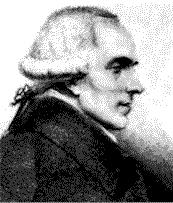 106.
Pierre Simon de Laplace ( 1749-1827) French mathematician, philosopher,
and astronomer, a contemporary of Napoleon. Laplace
is best known for his nebular hypothesis of the origin of the solar
system. 106.
Pierre Simon de Laplace ( 1749-1827) French mathematician, philosopher,
and astronomer, a contemporary of Napoleon. Laplace
is best known for his nebular hypothesis of the origin of the solar
system.
" It is India that gave us the ingenious method
of expressing all numbers by ten symbols, each receiving a value of position as
well as an absolute value, a profound and important idea which appears so simple
to us now that we ignore its true merit. But its very simplicity, the great ease
which it has lent to all computations, puts our arithmetic in the first rank of
useful inventions, and we shall appreciate the grandeur of this achievement the
more when we remember that it escaped the genius of Archimedes and Appollnius,
two of the greatest men produced by antiquity."
(source:
The
Discovery of India - By Jawaharlal Nehru Oxford University Press.1995 p. 217)
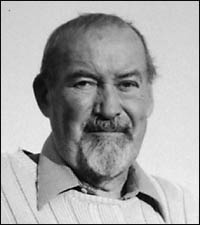 107. Ninian
Smart
(
) Professor
of Sociology. Born in Scotland, he taught at the Universities of London,
Birmingham, and Wales for many years before moving to the University of
California, Santa Barbara, 107. Ninian
Smart
(
) Professor
of Sociology. Born in Scotland, he taught at the Universities of London,
Birmingham, and Wales for many years before moving to the University of
California, Santa Barbara,
"The genius of Hinduism is to
combine divergent practices and beliefs into one overall system. "
(source: unknown).
108. Albrecht
Weber (1825 - 1901) author
of The History of Indian Literature,
London 1878, writes:
“When
we compare the doctrines, aims, organization of this (Pythagorean) brotherhood
with Buddhistic monarchism, we are almost tempted to regards Pythagoras as the
pupil of the Brahmins…Dualism, Pessimism, metempsychosis, celibacy, a common
life according to the rigorous rules, frequent self-examination, meditation,
devotion, prohibitions against bloody sacrifices, kindliness towards all men,
truthfulness, fidelity, justice, and all these elements are common to both.”
(source:
Manu: A Study in Hindu Social Theory - By Kewal
Motwani p. 23).
109.
Francesco Clemente ( ) Italian born Indophile, New York artist
Clemente was born in 1952. His art was displayed at the Solomon R. Guggenheim
Museum recently. He is the youngest artist ever to receive a full-museum
retrospective at the Guggenheim. Clemente arrived in India in 1973 and 1978 made
more than ten trips there, immersing himself deep in India's philosophy,
religion, art and crafts.
"The Gods who left thousands of years ago in
Milan (Europe) are still in India."
"In Indian diversity there is still the memory of
very refined expressions which we have lost."
 110. Geoffrey
Moorhouse (1931
- ) author of several books including India
Britannica, and Om:
an Indian Pilgrimage. He has observed: 110. Geoffrey
Moorhouse (1931
- ) author of several books including India
Britannica, and Om:
an Indian Pilgrimage. He has observed:
"No other country has lived with so complicated a
past so equably, assimilating everything that has happened to it, obliterating
naught, so that not even the intricate histories of European states have
produced such a rich pattern as that bequeathed by the Mauryas, the Ashokas, the
Pahlavas, the Guptas, the Chalykyas, the Hoysalas, the Pandyas, the Cholas, the
Mughals, and the British - to identify a few of the people that have shaped
India's inheritance. "
"Religion, flourishes here as it does
nowhere else. Other lands may surrender themselves totally to a particular
faith, but in India most creeds are deeply rooted and acknowledged
fervently. Virtually the whole population practices some form of devotion: the
Indian without the slightest feeling for the divine, without a spiritual
dimension to his life, is exceedingly rare."
Incomparable and inimitable she is, India is also our
great paradigm."
(source: Om:
an Indian Pilgrimage -
By Geoffrey Moorhouse p.
15 -16).
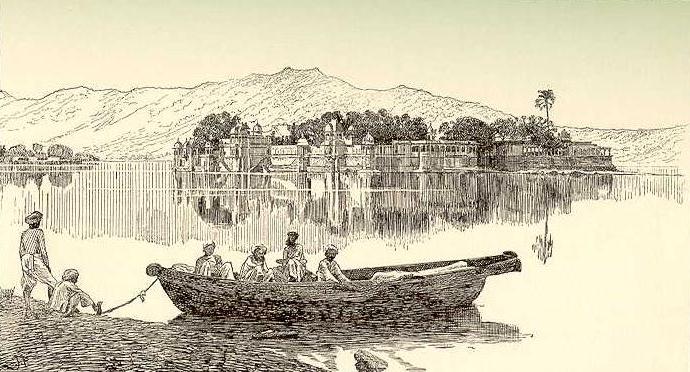
Palace on the Lake at Udaipur,
Rajasthan, India.
***
 111. Goldsworthy Lowes
Dickinson (1862-1932), the
son of portrait painter Cato Lowes Dickinson. He was brought up in a Christian
Socialist environment and though he later rejected Christianity he saw his work
in the context of its social utility. He was a pacifist during World War I, and
he was later instrumental in the conception of the League of
Nations. 111. Goldsworthy Lowes
Dickinson (1862-1932), the
son of portrait painter Cato Lowes Dickinson. He was brought up in a Christian
Socialist environment and though he later rejected Christianity he saw his work
in the context of its social utility. He was a pacifist during World War I, and
he was later instrumental in the conception of the League of
Nations.
He is the author of An
Essay on the Civilizations of India, China & Japan, in
an essay which seeks with justice to define the character of Indian
civilization, profoundly remarks, that it is so unique that the contrast is not
so much between East and West as between India and the rest of the world. Thus
India stands for something which distinguishes it from all other peoples, and so
she calls Herself a Karma-bhumi as opposed to the Bhoga-bhumi of all other
peoples. For this She has
been wonderfully preserved until today. Even now we can see the life of
thousands of years ago. Standing
on the Ghats at Benares or by any village well we are transported into the
beautiful antique world.
(source: Is
India Civilized - Essays on Indian Culture - By Sir John Woodroffe
p.136 -137).
Dickinson, who was a
friend of E. M. Forster,
wrote in his "Essay on the Civilizations"
thesis, wrote:
"The real antithesis is not between East and
West, but between India and the rest of the world." Only India is
different; only India un spools some other possibility fantastically. India is
the odd man out of the global citizenry." Dickinson held, because religion, religion, religion everywhere had transported
the land to somewhere nearly extraterrestrial. All other countries were located
on planet Earth, in present time, in specific material conditions- which were so
much "maya" or secondary reality in India, where what was important
had migrated over the mountaintops into the clouds.
"Indian religion has
never been a system of dogma,
and is not entangled in questionable history. Indian philosophy and religion
have always affirmed that there is; that by meditation and discipline an
internal perception is opened which is perception of truth."
"In the first place, India
has never put Man in the center of the universe. In India, and wherever Indian
influence has penetrated, it is, on the one hand, the tremendous forces of
nature, and what lies behind them that is the object of worship and of
speculation; and, on the other hand, Mind and Spirit; not the mind or spirit of
the individual person, but the universal Mind or Spirit, which is in him, but
which he can only have access by philosophic mediation and discipline....It is
very much in harmony with the spirit of western science than with that of
western religion. And this fact is exemplified not only by the religious and
philosophic literature of India, but by its art."
(source: An
Essay on the Civilizations of India, China and Japan - By G. Lowes Dickinson
p.11-31).
 112. George
Bernard Shaw, (1856-1950) a vegetarian
and Nobel Laureate in
Literature. He was an active socialist on the executive committee of the Fabian
Society along with Annie Besant. Famous British Author and Playwright,
of books such as Pygmalion. 112. George
Bernard Shaw, (1856-1950) a vegetarian
and Nobel Laureate in
Literature. He was an active socialist on the executive committee of the Fabian
Society along with Annie Besant. Famous British Author and Playwright,
of books such as Pygmalion.
Shaw
remarked:
"The Indian way of life provides the vision
of the natural, real way of life. We veil ourselves with unnatural masks. On the
face of India are the tender expressions which carry the mark of the Creators
hand. "
In the face of an
Indian, you can see the natural glory of life, while we have covered ourselves
with an artificial clock.
"The apparent multiplication of gods is
bewildering at the first glance, but you soon discover that they are the same
GOD. There is always one uttermost God who defies personification. This
makes Hinduism the most tolerant religion in the world, because its one
transcendent God includes all possible gods. In fact Hinduism is so elastic and
so subtle that the most profound Methodist, and crudest idolater, are equally at
home with it."
(source: http://www.geocities.com/hindusoc/special/hindintr.htm).
113. W. Crooke
in
his book " The Popular Religion and Folklore of Northern India"
(Oxford University Press, 1896.
" Among all the great religions of the world there
is none more catholic, more assimilative, than the mass of beliefs which go to
make up what is popularly known as Hinduism."
(source: The Popular Religion and Folklore of Northern India"
Oxford University Press, 1896).
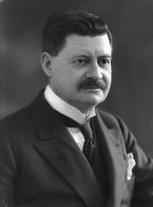 114. Sir Charles
Norton Edgcumbe Eliot
(1864-1931), British diplomat and colonial
administrator, a famous scholar and linguist of Oxford, observed on his book
Hinduism
and Buddhism - An Historical Sketch: 114. Sir Charles
Norton Edgcumbe Eliot
(1864-1931), British diplomat and colonial
administrator, a famous scholar and linguist of Oxford, observed on his book
Hinduism
and Buddhism - An Historical Sketch:
"Let me confess that I cannot share the
confidence in the superiority of Europeans and their ways which is prevalent in
the West." " European civilization is not satisfying and Asia can
still offer something more attractive to many who are far from Asiatic in
spirit."
"Indian religions have more
spirituality and a greater sense of the Infinite than our western creeds and
more liberality.
They are not merely tolerant but often hold that different
classes of mankind have their own rules of life and suitable beliefs and that he
who follows such partial truths does no wrong to the greater and all-inclusive
truths on which his circumstances do not permit him to fix his attention....and
are more penetrated with the idea that civilization means a gentle and
enlightened temper - an idea sadly forgotten in these days of war. "
"I do not think that
Christianity will ever make much progress in Asia, for what is commonly known by
that name is not the teaching of Christ but a rearrangement of it made in Europe
and like most European institutions practical rather than thoughtful. And as for
the teaching of Christ himself, the Indian finds it excellent but not ample or
satisfying. There is
little in it which cannot be found in some of the many scriptures of
Hinduism..."
 "The claim of India to the attention of the
world is that she, more than any other nation since history began, has devoted
herself to contemplating the ultimate mysteries of existence and, in my eyes,
the fact that Indian thought diverges widely from our own popular thought is a
positive merit." "The claim of India to the attention of the
world is that she, more than any other nation since history began, has devoted
herself to contemplating the ultimate mysteries of existence and, in my eyes,
the fact that Indian thought diverges widely from our own popular thought is a
positive merit."
(source: Hinduism
and Buddhism - An Historical Sketch -
3 volume set p. xcviii -
xcix).
"Hinduism has not been made,
but has grown. It is a jungle, not a building. It is a living example of a great
national paganism such as might have existed in Europe if Christianity had not
become the state religion of the Roman Empire, if there had remained an
incongruous jumble of old local superstitions, Greek philosophy, and oriental
cults such as the worship of Sarapis or Mitras."
(source: Hinduism
- By A. C. Bouquet p.
13).
Compared to Islam and Christianity, Hinduism’s doctrines
are extraordinarily fluid, and multiform. India deals in images and metaphors. Restless,
subtle and argumentative as Hindu thought is, it is less prone than European
theology to the vice of distorting transcendental ideas by too stringent
definition. It adumbrates the indescribable by metaphors and figures. It is not
afraid of inconsistencies which may illustrate different aspects of the
infinite, but it rarely tries to cramp the divine within the limits of a logical
phrase.
The Hindu has an extraordinary power of combining dogma and
free thought, uniformity, and variety. Utmost latitude of interpretation is
allowed. In all ages Hindus have been passionately devoted to speculation. It is
also to point out that from the Upanishads down to the writings of Tagore in the
present day literature from time to time enunciates the idea that the whole
universe is the manifestation of some exuberant force
giving expression to itself in joyous movement. Thus the Taittiriya
Upanishad (III. 6) says:
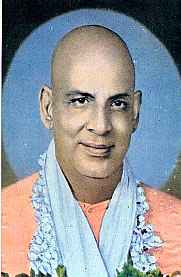 “Bliss is Brahman, for from bliss all these
being are born, by bliss when born they live, into bliss they enter at their
death.” “Bliss is Brahman, for from bliss all these
being are born, by bliss when born they live, into bliss they enter at their
death.”
(source: Hinduism
and Buddhism: An Historical Sketch Volume I p.
38-78).
115.
Sri Swami Sivananda Saraswati Maharaj
(1887-1963) the founder of The Divine Life Society, with headquarters in
Rishikesh, Himalayas, began as a physician before he turned sannyasi.
Swami
Sivananda said:
"
Hinduism
stands unrivaled in the depth and grandeur of its philosophy. Its ethical
teachings are lofty, unique and sublime. It is highly flexible and adapted to
every human need. It is a perfect religion by itself.
It is not in need of anything from any other
religion. No other religion has produced so many great saints, great patriots,
great warriors, great Pativratas (chaste women devoted to their husbands).
"The
more you know of the Hindu religion, the more you will honor and love it. The
more you study it, the more it will enlighten you and satisfy your heart.
"
 116. Juan
(Joan) Mascaro
(1897 - 1987) taught at Oxford University,
Parameshvara College at Jaffna, the University of Barcelona, and Cambridge
University. 116. Juan
(Joan) Mascaro
(1897 - 1987) taught at Oxford University,
Parameshvara College at Jaffna, the University of Barcelona, and Cambridge
University.
He was the author of The
Bhagvad Gita - translated By Juan Mascaro. Penguin Classics, 1962) and
he paid a rich tribute to the glory of the Sanskrit literature:
"Sanskrit literature is a great literature. We
have the great songs of the Vedas, the splendor of the Upanishads, the glory of
the Upanishads, the glory of the Bhagavad-Gita, the vastness (100,000 verses) of
the Mahabharata, the tenderness and the heroism found in the Ramayana, the
wisdom of the fables and stories of India, the scientific philosophy of Sankhya,
the psychological philosophy of yoga, the poetical philosophy of Vedanta, the
Laws of Manu, the grammar of Panini and other scientific writings, the lyrical
poetry, and dramas of Kalidasa. Sanskrit literature, on the whole, is a romantic
literature interwoven with idealism and practical wisdom, and with a passionate
longing for spiritual vision."
"Amongst the sacred books
of the past, the Upanishads can be called the truth the Himalayas of the soul.
Their passionate wanderings of discovery to find that sun of the spirit in us,
from whom we have the light of our consciousness and the fire of our life; the
greatness of their questions, and the sublime simplicity of their answers; their
radiance of joy..."
(source: The
Upanishads - By Juan Mascaro).
 "In the Bhagavad Gita Arjuna
becomes the soul of man and Krishna the charioteer of the soul." "In the Bhagavad Gita Arjuna
becomes the soul of man and Krishna the charioteer of the soul."
"The greatness of the
Bhagavad Gita is the greatness of the universe, but even as the wonder of the
stars in heaven only reveals itself in the silence of the night, the wonder of
this poem only reveals itself in the silence of the soul."
"the essence of the
Bhagavad Gita is the vision of God in all things and of all things in God."
"The Gita is like a
little shrine in a vast temple, a temple that is both a theatre and a fair of
this world."
Self harmony, or self-control,
is again and again praised in the Bhagavad Gita - All perfection in action is a
form of self-control, and this sense of perfection is the essence of the Karma
yoga of the Gita. The artist must have self-control in the moment of creation,
and all work well done requires self-control. But the Bhagavad Gita wants us to
transform our whole life into an act of creation."
(source: The
Bhagvad Gita - translated By Juan Mascaro).
Mascaró, a Spanish scholar and admirer of the
Upanishads, said:
"If
Beethoven could give us in music the spirit of the Bhagavad Gita, what a
wonderful symphony we should hear."
(source: By Swami
Tathagatananda
- swaveda.com).
117. Madame Alice
Louis-Barthou writes:
" I look upon the Occident (Europe) with
abomination. It represents for me fog, grayness, chill, machinery, murderous
science, factories with all the vices, the triumph of noise, of hustling, of
ugliness...The Orient is calm, peace, beauty, color, mystery, charm, sunlight,
joy, ease of life, and reverly: I find the exact opposite of our hateful
and grotesque civilization..... If I had my way, I should have a wall built
between the Orient and the Occident to keep the latter from poisoning the
former; I should go and live where you can see clearly and where there are no
Europeans."
118. Professor H.
G. (Hugh George) Rawlinson (1880 - ) author
of several books including India, a short cultural
history, remarks that,
"almost all the
theories, religious, philosophical, and mathematical, taught by the Pythagoreans
were known in India in the sixth century B.C."
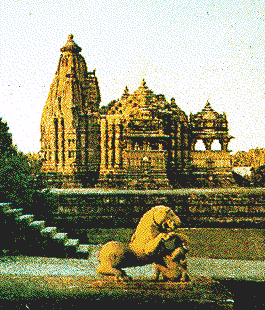 119. W. J. Grant
in his book The Spirit of India says: 119. W. J. Grant
in his book The Spirit of India says:
"India indeed has a preciousness which a
materialistic age is in danger of missing. Some day the fragrance of her
thought will win the hearts of men. This grim chase after our own tails which
marks the present age cannot continue for ever. The future contains a new human
urge towards the real beauty and holiness of life. When it comes India will be
searched by loving eyes and defended by knightly hands."
"The religion of the
Hindus is rich in legend and stupendous allegory. It is a religion of great
dignity and beauty. Its wrestlings with reality are as courageous as any in the
whole history of mankind..' Indian thought has generally been contemplative, it
has seldom been enamored of the material side of life."
"In the realm of
religious philosophy she has given to us the most searching examination of
the ethical law the world is ever likely to have. No Greek was more splendid in
his scientific fidelity than the quiet company of Indian thinkers who made the
Upanishads and traced the whole beauteous outline of the Eastern spirit."
"There are cities
in India whose grace and charm are matched only by the sweetness of an
immemorial religion. Nowhere else in the world have I been so exquisitely
invaded by the mystic quality of life."
"She is grave and old and
stupendous. Her accents are for the calm and gracious. Her temples are laden
with symbolism....and internal beauties. It is true, that India is royal...India
has been royal at heart from her very foundations of her memory."
"Our sublimest delusion is that
India is backward. This predicates, of course, that we are progressive. If
backwardness and progress depend on the rate at which one can gobble up vanities
perhaps India does not need our aid.....India's devotion to being good rather
than being clever comes nearer the heart of a true civilization. Cleverness dies
on the tongue like a social pleasantry, goodness echoes round the universe in an
un extinguishable reality. We in the West are too busy to see that science
without soul is like words without meaning."
"India's greatness is in her
humility; her weakness is her strength. She is both wiser and more effective
than the West, for she does not declare that reform is not a new shirt on Sunday
morning but a clean heart at the Throne of Grace. Justice without spirit of
justice is as much of an achievement as a river without its water."
(source: The
Spirit of India - By W. J. Grant
London published by B.
T. Batsford Ltd. 1933 preface and p. vi - 58).
 120. Dr. A. L. Basham,
one of the leading authority of ancient Indian culture and author of The
Wonder That Was India 120. Dr. A. L. Basham,
one of the leading authority of ancient Indian culture and author of The
Wonder That Was India
"Our over-all impression is that no other part of
the ancient world were the relations of man and man, and of man and the state,
so fair and humane. In no other early civilization were slaves so few in number,
and in no other ancient law book are their rights so well protected as in the Arthashastra....
In
all her history of warfare, Hindu India has few tales to tell of cities put to
the sword or of the massacre of noncombatants...To us the most striking feature
of ancient Indian civilization is its humanity....Our second general impression
of ancient India is that her people enjoyed life, passionately delighting both
in the things of the senses and the things of the spirit...India was a cheerful
land, whose people, each finding a niche in a complex and slowly evolving social
system, reached a higher level of kindliness and gentleness in their mutual
relations than any other nation of antiquity. For this, as well as for her great
achievements in religion, literature, art, science and mathematics, one European
student at least would record his admiration of her ancient culture."
(source: India:
A World in Transition - By Beatrice Pitney Lamb
p. 33).
"India was cheerful land,
whose people, each finding a niche in a complex and slowly evolving social
system, reached a higher level of kindliness and gentleness in their mutual
relationships than any other nation of antiquity."
(source:
The
Wonder That Was India
- By A L Basham p. 8 - 9).
"The procession of the equinoxes
was known, and calculated with some accuracy by medieval
astronomers, as were the lengths of the year, the lunar month, and
other astronomical constants. These calculations were reliable for
most practical purposes, and in many cases more accurate than those
of the Greco-Roman world. Eclipses were forecast with accuracy and
their true cause understood."
These were achieved without the help
of a telescope. Accurate measurement was made possible by the
decimal system of numerals, invented by the Indians.
It is certain that the Vedic Indians knew something of
astronomy and that it had a high utilitarian value for them as it did for all
peoples of antiquity. The Vedic priests had to make careful calculations of
times for their rituals and sacrifices, and also had to determine the time of
sowing and harvest. Moreover, astronomical periods played an important role in
Vedic thought for they were considered to be successive parts of the ever
returning cosmic cycle.
The Rig Veda lists a number of stars and mentions twelve divisions of the sun's
yearly path (rashis) and also 360 divisions of the circle. Thus, the year of 360
days is divided into twelve months. The sun's annual course was described as a
wheel with twelve spokes, which correspond to the twelve signs of the
zodiac.
 The theory of the great cycles of the universe and the
ages of the world is of older origin than either Greek or Babylonian
speculations about the "great year," the period within which all the
stars make a round number of complete revolutions. But there is remarkably close
numerical concordance in these theories. The Indian concept of the great year (mahayuga)
developed from the idea of a lunisolar period of five years, combined with the
four ages of the world (yugas) which were thought to be of unequal perfection
and duration, succeeding one another and lasting in the ration of 4:3:2:1. The theory of the great cycles of the universe and the
ages of the world is of older origin than either Greek or Babylonian
speculations about the "great year," the period within which all the
stars make a round number of complete revolutions. But there is remarkably close
numerical concordance in these theories. The Indian concept of the great year (mahayuga)
developed from the idea of a lunisolar period of five years, combined with the
four ages of the world (yugas) which were thought to be of unequal perfection
and duration, succeeding one another and lasting in the ration of 4:3:2:1.
The
last, the Kaliyuga,
was one-tenth of the mahayga or 432,000 years. This figure was calculated not
only from rough estimates of planetary and stellar cycles, but also from the
10,800 stanzas of the Rig Veda, consisting of 432,000 syllables. The classical
astronomers calculated the great period as one of 4,320,000 years, the basic
element of which was a number of sidereal solar years, 1,080,000 a multiple of
10,800. According to Berossus, the Babylonian great year was a period of 432,000
years, comprising 120 "saroi" of 3,600 years apiece.
The Rig Veda talks
about the annual motion of the earth. The diurnal motion is
described in the Yajur Veda. The Aiteriya Brahmana explains that
"the sun neither sets nor rises, that when the earth, owing to
the rotation on its axis is lighted up, it is called day" and
so on.
(source: Haug's Aitreya Brahmana
- Volume II. p. 242).
Top of Page
Show
in alphabetical order
Quotes121_140
 
Page < 1 2 3 4 5 6 7 8 9 10 11 12 13 14 15 16 17 18 19 20 21 22 23 24 >
|